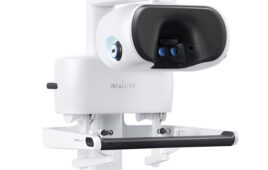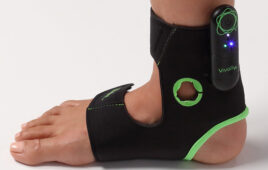
[Photo by Quality Stock Arts – stock.adobe.com]
Medical device innovation and commercialization is a complex, orchestrated symphony, and clinical needs, product testing and compliant scalability are the key instruments.
In this article, we explore each of these areas and how you can optimize each to harmonize the process and get your product to patients.
1. Clinical customer misalignment
Many companies fight — and lose — the battle to fundamentally align a brilliant clinical idea and true clinical requirements for widespread adoption.
For example, commoditized products such as cannulae, syringes and blood pressure cuffs are subject to the forces of distributor and group purchasing organization (GPO) contracts. On the other hand, breakthrough products are inherently subject to skepticism, long lead times to generate clinical evidence, and naysayers who believe “what we’re doing is good enough.”
Innovating and driving new product adoption in this environment is challenging. To cut through the noise, you must design a product that convinces physicians it addresses an unmet clinical need that existing products do not. The product must also scale in manufacturing, eliminate the potential for user error, increase safety and be adoptable at all levels of clinical acumen to broaden patient reach.
Here’s how to do all of that and more. You’ll need to speak with end-users to leverage their treasure troves of knowledge. Create a deep understanding of your product’s safety, quality and user experience by gathering key insights. The feedback should center around product features, customer service, device longevity, digital integration, supply chain redundancies and continuity into the home, if applicable.
To reach these stakeholders and collect their insights, partner with sales and marketing teams. Deploy questions and surveys at a regular cadence to stay relevant with market demand shifts, competitor evolution and new product introductions. Make sure to use that knowledge, because the time of clinicians (and your commercial partners) is valuable. Respecting their input will allow for an ongoing relationship as your product pipeline evolves.
Is the juice worth the squeeze? Today’s healthcare environment is more dynamic than ever, so if you are not asking these questions, you can be sure your competition is.
2. Limiting device testing to the bench
Medical device companies often decline to take testing beyond the bench in an effort to get to market with less firefighting. But testing beyond the bench is one of the best investments a device developer can make.
For patients and physicians alike, quality of life has replaced patient survival as a key metric of success. Medical devices today are measured on the contributions to reduce time, save money and improve outcomes.
With a new product, there is always an eagerness to launch full bore and limit beta testing. Bad idea. Work with your leadership team to define a robust yet short pilot with the product. Animal labs are a great place to start. Time in the hospital is best.
Bench testing may pass with flying colors, but issues can quickly surface when devices are in the clinical environment for the first time. It can be argued that SOPs and a test method validation — TMV, making sure the test you are running indeed tests the thing you want to test — is enough to justify bench testing and circumvent field testing.
What could go wrong? Imagine a small, clear part that is visible enough in a lab, but its transparency makes it easy to lose in a surgical field of blue drapes. Worst case: The clear piece unknowingly falls into a patient’s open cavity and isn’t retrieved, leading to clinical complications.
And while all IT connections may work well in the lab, wait until the hospital’s security system disallows your code on their network. That could mean your product is dependent on the hospital’s IT infrastructure and cannot be implemented.
Another example: If testing products on pigs or other animals that are not reflective of all patients’ skin tones, malfunctions may not be revealed in testing if the product’s performance varies based on different patient pigmentation.
Get out there and go beyond your application failure mode and effects analysis that speculates all the ways your product could fail in the clinical environment.
3. Sacrificing compliant scalability for speed to market
First to market is an extreme advantage when introducing a new product or revolutionary therapy. Likewise, being first to market can threaten clinical adoption when a product that does not perform well is introduced too quickly. The negative impact here affects both the technology’s potential in the marketplace and the reputation of the manufacturer.
Once the right product has been developed and appropriately tested, it’s time to mitigate against an inconsistent global launch. Quality and testing demands differ across international markets to satisfy local regulatory requirements. The FDA and European Union Medical Device Regulations (EU MDR) hold testing to high, albeit different standards. Similarly, standards in Japan, China and rest of the world differ for the same product, creating considerable hurdles the manufacturer must overcome to commercialize and scale globally.
Consider reviewing these nuances as testing protocols are being developed to ensure fewer surprises are later uncovered and impede your product from getting to a patient. Organizations such as the Regulatory Affairs Professional Society (RAPS) can help you develop a baseline understanding allowing for a more educated discussion with your internal regulatory partners. While this adds a little more work for you, remember your regulatory partners are often swamped. Have a targeted, informed list of questions that you need answered for the next iteration of your device to maximize your product development efforts.
Patients are urgently awaiting your next medical device innovation to brighten their lives, just as an eager audience awaits hearing your symphony. With these strategies in mind, what will you do to make the orchestra play even better?

Catalyze Healthcare CEO Haley Schwartz [Photo courtesy of Catalyze Healthcare]
How to join the MDO Contributors Network
The opinions expressed in this blog post are the author’s only and do not necessarily reflect those of Medical Design & Outsourcing or its employees.




